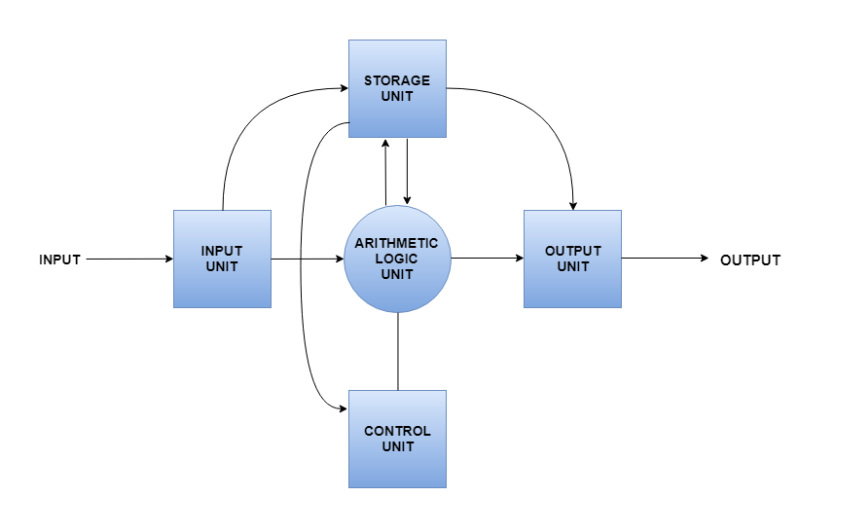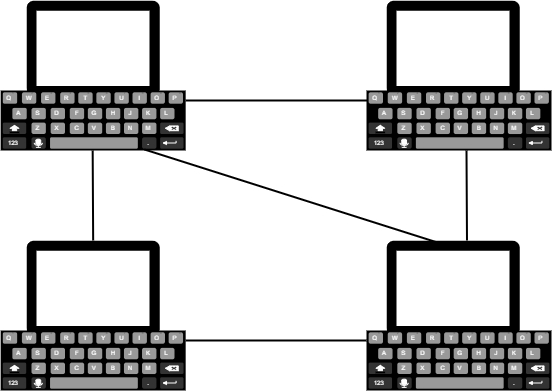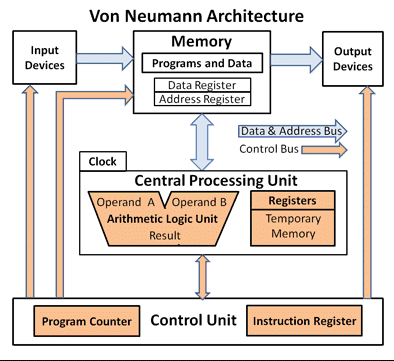
The input data travels from input unit to ALU. The data constantly moves from storage unit to ALU and back again.
Details about all the computer units are −
- Input UnitThe input unit provides data to the computer system from the outside.
- Output Unit The output unit provides the results of computer process to the users i.e it links the computer with the external environment. Most of the output data is the form of audio or video. The different output devices are monitors, printers, speakers, headphones etc.
- Secondary or external storage is not directly accessible by the CPU. Secondary storage contains a large amount of data permanently. It can perform operations like addition, subtraction, multiplication, division etc. The arithmetic logic unit and the control unit together form the central processing unit.
- It transfers data throughout the computer as required including from storage unit to central processing unit and vice versa.
A network model represents the organization of multiple computers in a network.
The computer network architecture is as follows
Collaborative Computing Architecture
The collaborative computing architecture is a mixture of centralized and distributed computing. In the collaborative model, the individual members of a network can process their user’s basic need.
Peer-to-Peer Architecture
In this architecture, there are no dedicated servers. This arrangement is applicable for environments with a finite number of clients (usually ten or less).

Advantages
- It is accessible to design and perpetuation.
- The network is not dependent on a precise computer.
Modem stands for Modulation Demodulation. A modem converts the digital data signals into analogue data signals.
There are frequently two types of Modems that are as follows −
Standard Modem
The standard modems use generic device drivers, and they can be internal and external ones. The internal modems do not need much physical structure.
Window Modem
A window modem is a private plug and plays tool. It requires a particular device driver supported by the window operating framework to function correctly.
Features of Modems
The main features of modems are as follows −
- They have high uploading and communication rates. An X2 modem provides an uploading bandwidth between 28.8 to 56 Kbps.
- They are upgradeable through a software patch to meet almost any universal standard.
- Some modems provide advanced voice mail features, and those modems serve as intelligent, answering machines or digital information systems.
At its most fundamental level, a computer consists of a control unit, an arithmetic logic unit (ALU), a memory unit, and input/output (I/O) controllers. The memory stores the program’s instructions and data. The control unit fetches data and instructions from memory and uses operations of the ALU to carry out those instructions using that data. (The control unit and ALU together are referred to as the central processing unit [CPU].) The operational speed of the CPU primarily determines the speed of the computer as a whole. All of these components—the control unit, the ALU, the memory, and the I/O controllers—are realized with transistor circuits.

Types of Modems

Optical Modem
It converts the digital data signals into the pulse of light transmitted on the optical fiber used by it.
Digital Modem
A digital modem converts digital data into digital signals. It modulates the digital data on the digital carrier signals for transmission on digital transmission lines.
Acoustic Modem
The acoustic modem is a particular type of modem that can couple the telephone handset with a device used by traveling salespeople to connect the hotel phones. It contains a speaker and microphone.
Smart Modem
The smart modem allows auto-dial/redial and auto-answer capabilities. It contains a microprocessor onboard that uses the Hayes AT command set to provide auto-dial and auto answering functions.
Short Haul Modem
The short-haul modem is those who are present in your PC at home.




